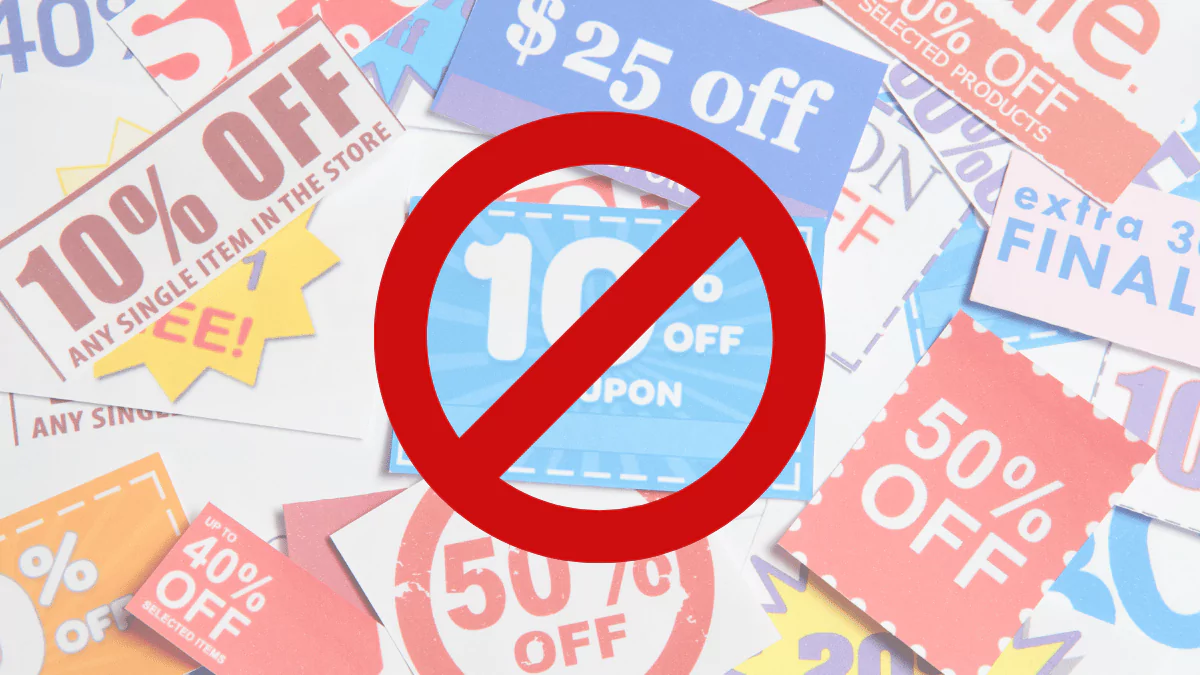Let’s be real, food is pricey. The average family spends over 10 percent of their income just trying to keep the fridge full. That’s more than $6,000 a year! Meanwhile, paychecks haven’t exactly been growing, and food prices keep climbing. If you’re trying to feed your family without draining your bank account, it can feel pretty stressful. learn how to cut your grocery bill in half.
But here’s the good news: You can bring that number down. A lot.
And no, you don’t have to become one of those people on Extreme Couponing who spend hours every week clipping, sorting, and planning.
Most people don’t have the time (or patience) for that. How? Let us tell you!
Tips To Save Money On Your Grocery Bills
A while back, I went shopping with Kristen, a single mom of four, who had never used coupons and didn’t know where to start. She wanted to slash her grocery spending but wasn’t about to spend her whole weekend preparing for one shopping trip.
If you’re like Kristen—busy, juggling a million things, and just looking for a way to save money without flipping your life upside down—this is for you. I showed her a handful of simple changes that made a big difference. These tips don’t require a ton of effort, but they do work. And yes, they can cut your grocery bill in half.
Let’s break it down.
1. It’s Not Really About Coupons

Here’s a little secret: Those jaw-dropping savings you see on TV aren’t just from coupons. Most of the time, the real savings come from sales.
That’s right—shopping the right sales can save you way more than clipping coupons ever could. So, before you even think about using coupons, get good at spotting a real sale.
And by “real,” I mean 30–50% off the regular price—not one of those fake “low price” tags that trick you into thinking something’s a deal when it’s not.
Your first job? Learn when your favorite items hit their lowest prices, and only buy them then. Grocery stores usually rotate sales every 6–8 weeks, so things you buy regularly will go on sale eventually. You just need to catch the timing.
Here’s where a little price tracking helps. You don’t need a fancy system—just jot down the regular price and sale price of items you buy a lot. When you see a big drop, that’s your moment.
Also, don’t assume you already know which store is cheapest. You might be surprised. A lot of folks think Walmart has the best deals, but traditional grocery stores often beat their “everyday low prices” when they run sales. For example, here in Florida, people assume Publix is expensive. But when you compare weekly ads, Publix often comes out ahead.
If you’ve got an Aldi nearby, check them out too. Their everyday prices are already low, and when they run sales, you can save even more.
The takeaway: Only buy items when they’re at their lowest price. That’s where the magic happens.
2. Stock Up When Prices Are Low

Here’s the second part of the plan: When you find a great sale, don’t just buy one or two of that item—buy enough to last you until it goes on sale again.
That’s usually 6 to 8 weeks. So if you eat two boxes of cereal a week, and it’s on sale for less than half the usual price, grab 12 boxes. That way, you’re stocked up and won’t have to pay full price the next time you run out.
Yes, it feels strange at first. You’re used to shopping for one week at a time. But by focusing on buying fewer items (the ones that are actually on sale), your total spending will still drop.
Eventually, your pantry will feel like a mini grocery store. You’ll have a stash of foods your family likes—things you bought when they were cheap—and you can plan meals around what you already have.
This doesn’t mean you need to turn your closet into a food warehouse. You don’t need a year’s supply of canned beans. Just aim for 6 to 8 weeks’ worth of variety—enough to cover the time between sales.
And if you’re worried this means living on chips and microwave dinners, don’t be. Stockpiling works just as well for healthy foods. Think frozen veggies, whole grain pasta, rice, beans, canned tomatoes, cheese, yogurt, oatmeal, and even almond milk. You’d be surprised at what you can store.
3. Eat Less Meat (Even Just a Little)

Meat is one of the most expensive parts of the average grocery bill. So cutting back—even just a little—can make a big difference.
You don’t have to become a vegetarian overnight. But doing one or two meat-free dinners each week can save you hundreds (if not over a thousand) dollars a year.
In my house, we eat very little meat. I’ve been a vegetarian for nearly two decades, and while the rest of my family still eats meat, I’ve found ways to make meals that everyone enjoys.
Here are a few of our favorites:
- Creamy potato soup
- Roasted veggie lasagna
- Black bean and corn chili
- Homemade mac and cheese
- Eggplant Parmesan
- Broccoli cheese soup
- Taco casserole (with beans instead of beef)
- Pasta with lemon, sage, and roasted vegetables
None of them feels like “sacrifice” meals. They’re tasty, filling, and easy to make.
And when you do buy meat, make it count. Stick to sale prices, stock up when it’s cheap, and freeze what you don’t use right away.
4. Flip the Way You Meal Plan

This one’s a game-changer.
Most people either (a) don’t plan meals at all and end up making extra trips to the store during the week, or (b) plan their meals first, then go shopping for whatever they need—even if it’s all full price.
We’re flipping that.
Instead of planning meals and then buying ingredients, look at what’s on sale and what you already have, then plan your meals around that.
Your stockpile is your new best friend. It’s like having your own grocery store at home—but filled with stuff you got at the lowest prices.
Shopping this way can save you time, too. No more last-minute trips for that one missing item. You’ll already have most of what you need.
If coming up with meal ideas feels overwhelming, there are helpful tools out there. One that stands out is a service called E-Meals. For a few bucks a month, they’ll send you meal plans and grocery lists based on your local store’s sales. There’s even an app. It’s not free, but it does make things a lot easier—and you can try it free for two weeks to see if it’s worth it for you.
5. Coupons Come Last, Not First

You might be surprised to see this at the bottom of the list, but there’s a reason for that.
Coupons are great, but they only really work if you’ve already done the other stuff: shopping the sales, stockpiling the right way, trimming your meat spending, and planning meals around what you already have.
When you combine coupons with sale prices—that’s when things really get exciting. That’s how you get those “I saved 60%!” moments.
But don’t stress about becoming a coupon master overnight. A while back, I created an 8-week guide for beginners, breaking it all down into simple steps. It’s helped thousands of people get started without feeling overwhelmed. If you want to learn more, that’s a good place to start—and it’s completely free.
Also, a lot of folks think coupons are only for junk food. While there are plenty of those, you can still find coupons for better options: yogurt, cheese, oats, frozen veggies, tea, almond milk, and basics like rice or pasta. There are also loads of coupons for non-food items—think shampoo, paper towels, cleaning products, and cold medicine.
One big rule here: Don’t buy something just because you have a coupon. That’s exactly what the brands want you to do. Wait for the sale, then use the coupon. That’s how you win.
Final Thoughts
This isn’t about turning grocery shopping into a second job. It’s about working a little smarter and making small shifts that really add up.
Here’s what to keep in mind:
- Always shop the sales
- Stock up when prices drop
- Eat less meat where you can
- Plan meals around your pantry.
- Use coupons to boost your savings—but only after the other steps
None of this is hard. You don’t have to do it all at once. Start with one step, then add another when you’re ready. Over time, you’ll notice your grocery bill shrinking—and staying low.
Think about it: Saving $75 a week means nearly $4,000 a year. That’s a vacation, a cushion for your savings account, or just less financial stress every month.
Give it a try. You’ve got this.
Michael Adams is a professional finance writer with a focus on tax education, budgeting, and personal finance. His goal is to make income tax topics clear and practical for individuals and entrepreneurs.

